 Treatments are created for the individual person, because even if two people suffer from the same disease, their bodies are not the same. Symptoms can manifest differently in the physical body, the mind, emotions, and so on. Treatments will take into account: what disease a person has, what symptoms they are experiencing, along with what primary life force (dosha) a person has, and the balance of their other doshas. Ayurveda states that disease and suffering result from an imbalance in the three doshas (Vata, Pitta and Kapha). So by balancing the body’s energies, the body can heal from the illness or disease.
Treatments are created for the individual person, because even if two people suffer from the same disease, their bodies are not the same. Symptoms can manifest differently in the physical body, the mind, emotions, and so on. Treatments will take into account: what disease a person has, what symptoms they are experiencing, along with what primary life force (dosha) a person has, and the balance of their other doshas. Ayurveda states that disease and suffering result from an imbalance in the three doshas (Vata, Pitta and Kapha). So by balancing the body’s energies, the body can heal from the illness or disease.
The primary treatments for Ayurveda medicine are a combination of: diet, exercise and lifestyle changes, herbal supplements, the Ayurveda detox, and massage. Ayurveda will address multiple health issues such as food intolerances, a lack of nutrients, or chronic stress, in order to reduce inflammation and increase energy and healing.
Treatments Explained
Ayurveda encourages people to eat more plant-based foods and real whole foods. A recommended diet may include specific foods that help to balance a person’s doshas. Here is a list of ayurvedic foods based on doshas. While each person’s diet depends on body type and needs, Ayurvedic diets for the three different dosha types all include various fresh herbs, spices, teas, vegetables, healthy fats, high-antioxidant foods and protein (Dr. Axe, 2019). Ayurveda also states there are six forms of taste: sweet, sour, salty, bitter, pungent, and astringent. Each one has a specific purpose: astringent (increasing absorption of minerals), sour (improving digestion), salty (maintains water electrolyte balance), bitter (stimulate other tastes), sweet (promotes strength and nourishes all tissues), and pungent (digestion and absorption).
Recommended exercises will be gentle, and help with boosting metabolism and circulation.
This is a key component of Ayurveda medicine. This is considered a precise science. An Ayurveda practitioner must have an in-depth knowledge of plants and how they will affect a person’s biochemistry, psychology, and human physiology. Every herb can have a different effect based on virya (active potency), vipak (post-digestive effect), and ras (taste). Some popular ayurvedic herbs and spices include ashwaghanda, boswellia, gotu kola, guggul, turmeric, and triphala. There are also specific herbal teas for all three doshas to help balance them.
- Ayurveda Detox
The Ayurveda detox is called Panchakarma. It is said to be one of the world’s most comprehensive cleansing detoxes. Dr. Tummala, owner of Trinergy Center for Integrative Psychiatry an Ayurveda clinic (who is from India), says the idea behind the cleanse is to remove “Ama” which is the byproduct of undigested food in the gut. This “Ama” initially accumulates in the gut, but eventually will spill over and be transferred to other tissues where it can exert its damaging effects causing illness. The Ama is the main toxin that is eliminated in PK. In modern medicine terms, Ama loosely translates to the inflammation byproducts that are first formed in the gut due to leaky gut and undigested food particles, which then travels to other organs and tissues.
 The Ayurveda detox releases toxins from deep within tissues, and this helps restore doshas to their proper place in the body. It helps to reduce symptoms and balance the dosha energies in the body. The cleanse may include fasting, diet, enemas, herbs, oil based laxatives, inhaling medicine, or body treatments.
The Ayurveda detox releases toxins from deep within tissues, and this helps restore doshas to their proper place in the body. It helps to reduce symptoms and balance the dosha energies in the body. The cleanse may include fasting, diet, enemas, herbs, oil based laxatives, inhaling medicine, or body treatments.
This type of massage is not only focused on relaxation, but also stress release and letting go of emotional blockages. It helps to create a balance of mind, body, and spirit.
Ayurveda is heavy on the use of essential oils and they are often infused with herbs. There are different types kneading, strokes, and pressures, which can help with the process of balancing the doshas. One type of Ayurvedic massage therapy is Marna, which focuses on stimulating the flow of life energy (prana) by kneading different points and channels of the body (Copper H20). It is different from the typical Swedish massage because of the heavy use of oils, and focus on energy points rather than manipulating muscles.
There is also a type of treatment called Shirodhara, where warm herb-infused oils are poured over the forehead in a rhythmic, smooth flow. Dr. Tummala, owner of Trinergy Center for Integrative Psychiatry an Ayurveda clinic (who is from India), says this procedure stimulates the “third eye center,” also called the “Ajna Chakra” or the pineal gland, and is thought to enhance relaxation and relieve insomnia through the hypothesized release of melatonin. Shirodhara can also enhance one’s sense of intuition through its stimulation of the “Ajna Chakra”
This is also called “Maharishi” which means to develop a state of enlightenment. It helps in creating calmness no matter how busy you are. It was developed by Maharishi Mahesh Yogi in the late 1950s. This technique of meditation uses mantras (a thought or sound which one focuses on). Meditation actually originates from India.
They are also called Pranayama. They will help with calming nerves for better energy, sleep, and hormone function.
Yoga originates from India, so it makes sense for it to be included. It can help reduce stress and improve anxiety. Yoga represents the “Vihara” or the exercise arm of therapeutic intervention in Ayurveda. The 3 main pillars of therapeutic intervention in Ayurveda are: “Ahara” or diet, “Vihara” or exercise and “Aushadhi” or medicine.
Essential oils are used for not only massage, but also inhaling.
Sound treatments include mantras, music, toning, or using bells, gongs, or bowls. It is believed that vibrations and frequencies can create harmony that are needed to bring balance to the body and the universe (Copper H2O).
Tummala, Aruna MD ABIHM. (2018, April 3). Trinergy Center For Integrative Psychiatry. Personal Interview. https://trinergyhealth.com/
Wong, Cathy. (2019 March 19). verywellhealth/Overivew of Ayurveda Healing. Retrieved from: https://www.verywellhealth.com/what-is-ayurveda-88174
BetterHealth Chanel/Ayurveda. (2012 May). Retrieved from: https://www.betterhealth.vic.gov.au/health/conditionsandtreatments/ayurveda
ELLE/So, What Exactly Is Ayurvedic Massage. (2019, February 18). Retrieved from: https://www.elle.com/beauty/health-fitness/a26255676/ayurvedic-massage/
COPPER H20/Ayurvedic Medicine Origin, History and Principles. Retrieved from: https://www.copperh2o.com/blogs/blog/ayurvedic-medicine-origin-history-and-principles
Kiefer MD, David. (2016 November 1). WebMD/What is Ayurveda? Retrieved from: https://www.webmd.com/balance/guide/ayurvedic-treatments#1
Guha PhD MPH MA, Amala. UNIVERSITY OF MINNESOTA: TAKING CHARGE of your HEALTH & WELLBEING/Is Ayurvedic Medicine Safe?/Where Can I Find an Ayurvedic Practioner?/What Happens in a Visit to an Ayurvedic Practitioner?/ What is the Philosophy of Ayurvedice Medicine? Retrieved from: https://www.takingcharge.csh.umn.edu/explore-healing-practices/ayurvedic-medicine/-ayurvedic-medicine-safe-0
Axe DC DMN CNS, Josh. (2019 April 10). Dr. Axe FOOD IS MEDICINE/Ayurvedic Medicine Benefits Include Lowering Stress and Blood Pressure. https://draxe.com/ayurvedic-medicine/


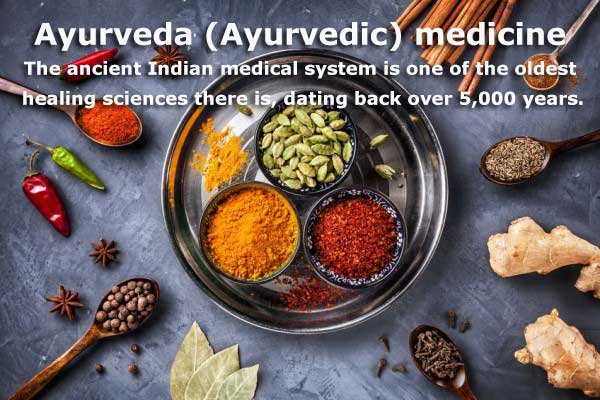 It is a type of natural, holistic (whole-body) healing system, focused on balancing the mind, body, spirit, and environment. An Ayurveda doctor will customize treatments to the individual. Treatments may include
It is a type of natural, holistic (whole-body) healing system, focused on balancing the mind, body, spirit, and environment. An Ayurveda doctor will customize treatments to the individual. Treatments may include 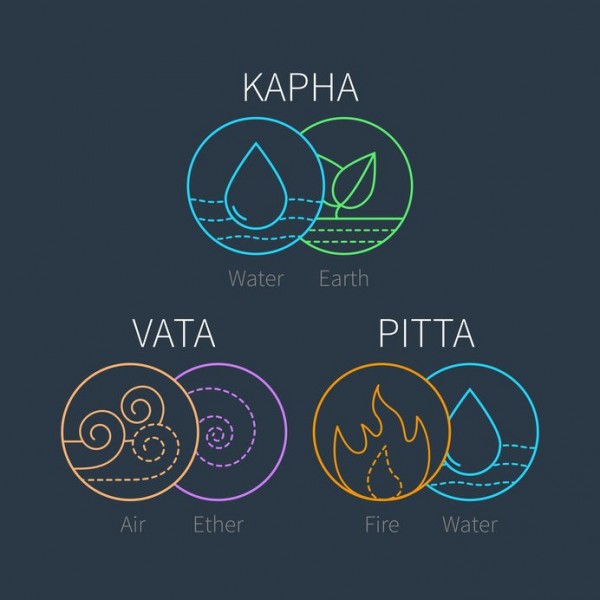 Ayurveda teaches us that every person is made up of the five basic elements found in the universe: space, air, fire, water, and earth. The three doshas are the energies or life forces that make up these elements, and each plays an important role in how the body function. There three doshas are Vata (space and air), Pitta (fire and water), Kapha (water and earth). Ayurveda teaches us that when you get sick there is an imbalance of the doshas. Also, the imbalance of the specific dosha is linked to the health issue you develop. Everyone has different dosha strengths, but typically one or two is more dominant than the others. The dominant dosha will determine a person’s body type, appetite, energy levels, moods, and other individual differences. Imbalances can occur from a variety of things such as poor diet, chemicals, toxins, genetic/birth defects, injuries, seasonal changes, age, physical/mental exertion, thoughts and emotions.
Ayurveda teaches us that every person is made up of the five basic elements found in the universe: space, air, fire, water, and earth. The three doshas are the energies or life forces that make up these elements, and each plays an important role in how the body function. There three doshas are Vata (space and air), Pitta (fire and water), Kapha (water and earth). Ayurveda teaches us that when you get sick there is an imbalance of the doshas. Also, the imbalance of the specific dosha is linked to the health issue you develop. Everyone has different dosha strengths, but typically one or two is more dominant than the others. The dominant dosha will determine a person’s body type, appetite, energy levels, moods, and other individual differences. Imbalances can occur from a variety of things such as poor diet, chemicals, toxins, genetic/birth defects, injuries, seasonal changes, age, physical/mental exertion, thoughts and emotions.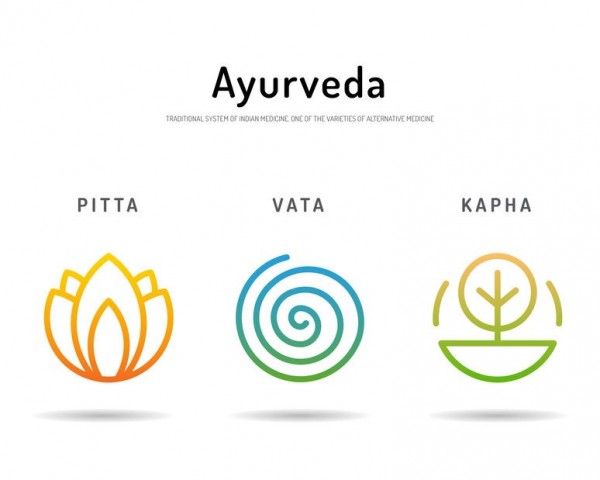 Pitta is the energy force that governs most metabolic activity, including digestion, absorption of nutrients, body temperature and energy expenditure (Dr. Axe, 2019). Pitta is considered to be like the sun or a combination of fire and water because it is the source of energy. It controls the digestive system, hormones linked to appetite, chemical, and other metabolic processes. Pitta is present in the small intestines, stomach, skin, blood, sweat glands, and eyes. Not only does Pitta manage our ability to digest food, but also digesting information on how we view the world. Eating sour foods, spicy foods, or spending too much time in the sun, are some of the ways pitta can become out of balance. When pitta is in balance people are intelligence and complacent.
Pitta is the energy force that governs most metabolic activity, including digestion, absorption of nutrients, body temperature and energy expenditure (Dr. Axe, 2019). Pitta is considered to be like the sun or a combination of fire and water because it is the source of energy. It controls the digestive system, hormones linked to appetite, chemical, and other metabolic processes. Pitta is present in the small intestines, stomach, skin, blood, sweat glands, and eyes. Not only does Pitta manage our ability to digest food, but also digesting information on how we view the world. Eating sour foods, spicy foods, or spending too much time in the sun, are some of the ways pitta can become out of balance. When pitta is in balance people are intelligence and complacent. 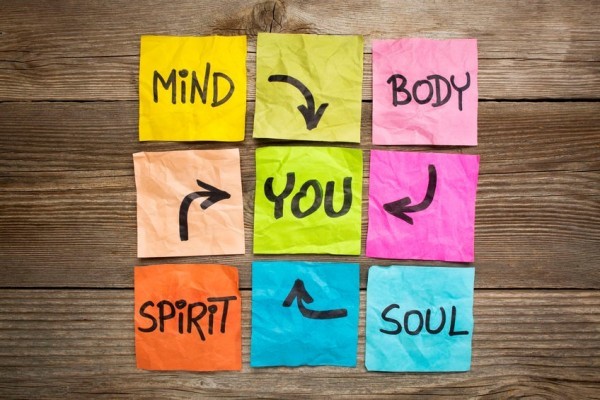 Dr Tummala, owner of Trinergy Center for Integrative Psychiatry an Ayurveda clinic (who is from India), says there isn’t any health conditions she is afraid to work with. She says her business is able to work with a wide range of illnesses and disease because Ayurveda treats the person and their specific imbalances. It is not disease focused as what has become the bane of modern medicine. So there is no antacid, no antihypertensive, no antidepressants, etc. Each individual person’s symptoms are understood on the basis of their dosha imbalance, and treatment is geared towards bringing the dosha’s back into balance. Although symptomatic treatments (relief of pain, etc.) are also used, it is always implemented within the context of also removing the underlying root causes. For example, two people with a diagnosis of Major Depression can have the same qualifying symptoms: sadness and loss of interest. But in one person, the underlying root cause can be a Vata imbalance and so this person will also have constipation, anxiety, terminal insomnia, etc; while the other person may have Pitta imbalance with diarrhea, chest pain, obsessiveness, early insomnia, etc. So the first person will receive Vata balancing treatments, and the second person will receive Pitta balancing treatments.
Dr Tummala, owner of Trinergy Center for Integrative Psychiatry an Ayurveda clinic (who is from India), says there isn’t any health conditions she is afraid to work with. She says her business is able to work with a wide range of illnesses and disease because Ayurveda treats the person and their specific imbalances. It is not disease focused as what has become the bane of modern medicine. So there is no antacid, no antihypertensive, no antidepressants, etc. Each individual person’s symptoms are understood on the basis of their dosha imbalance, and treatment is geared towards bringing the dosha’s back into balance. Although symptomatic treatments (relief of pain, etc.) are also used, it is always implemented within the context of also removing the underlying root causes. For example, two people with a diagnosis of Major Depression can have the same qualifying symptoms: sadness and loss of interest. But in one person, the underlying root cause can be a Vata imbalance and so this person will also have constipation, anxiety, terminal insomnia, etc; while the other person may have Pitta imbalance with diarrhea, chest pain, obsessiveness, early insomnia, etc. So the first person will receive Vata balancing treatments, and the second person will receive Pitta balancing treatments. Treatments are created for the individual person, because even if two people suffer from the same disease, their bodies are not the same. Symptoms can manifest differently in the physical body, the mind, emotions, and so on. Treatments will take into account: what disease a person has, what symptoms they are experiencing, along with what primary life force (dosha) a person has, and the balance of their other doshas. Ayurveda states that disease and suffering result from an imbalance in the three doshas (Vata, Pitta and Kapha). So by balancing the body’s energies, the body can heal from the illness or disease.
Treatments are created for the individual person, because even if two people suffer from the same disease, their bodies are not the same. Symptoms can manifest differently in the physical body, the mind, emotions, and so on. Treatments will take into account: what disease a person has, what symptoms they are experiencing, along with what primary life force (dosha) a person has, and the balance of their other doshas. Ayurveda states that disease and suffering result from an imbalance in the three doshas (Vata, Pitta and Kapha). So by balancing the body’s energies, the body can heal from the illness or disease. The Ayurveda detox releases toxins from deep within tissues, and this helps restore doshas to their proper place in the body. It helps to reduce symptoms and balance the dosha energies in the body. The cleanse may include fasting, diet, enemas, herbs, oil based laxatives, inhaling medicine, or body treatments.
The Ayurveda detox releases toxins from deep within tissues, and this helps restore doshas to their proper place in the body. It helps to reduce symptoms and balance the dosha energies in the body. The cleanse may include fasting, diet, enemas, herbs, oil based laxatives, inhaling medicine, or body treatments.
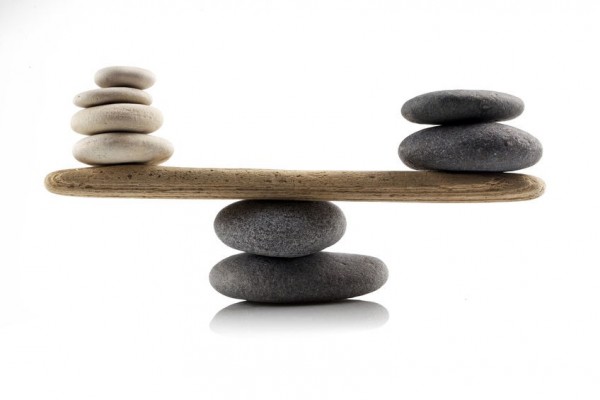 Treatment aims to get rid of impurities, reduce symptoms, increase disease resistance, reduce stress, and create more harmony in life (JOHN HOPKINS MEDICINE). Ayurveda medicine practitioners want people to live long, happy, healthy, and balanced lives, without complicated surgeries, ongoing prescription drugs, or painful health conditions.
Treatment aims to get rid of impurities, reduce symptoms, increase disease resistance, reduce stress, and create more harmony in life (JOHN HOPKINS MEDICINE). Ayurveda medicine practitioners want people to live long, happy, healthy, and balanced lives, without complicated surgeries, ongoing prescription drugs, or painful health conditions.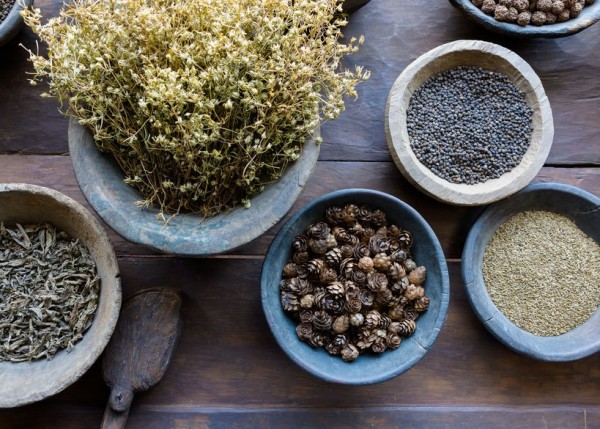 No Regulations on Ayurveda Medicine in the United States
No Regulations on Ayurveda Medicine in the United States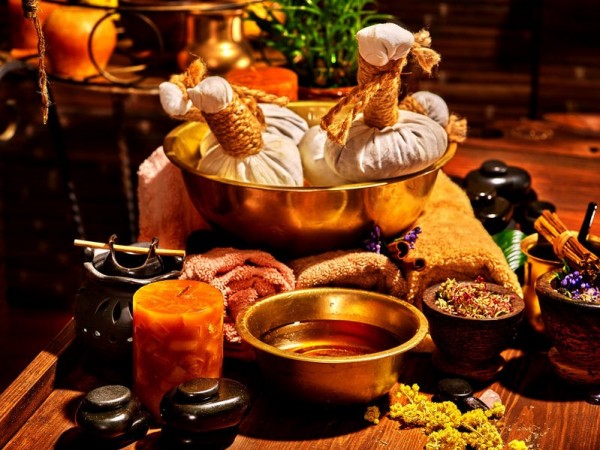 Ayurveda is the oldest healing science in the world dating back 3,000 to 5,000 years ago, older than traditional Chinese Medicine. It is still largely practiced as a primary form of medicine in India to this day. Ayurveda is actually made up of two words ‘ayu’ means life and ‘veda’ meaning knowledge. This translates to science of life or knowledge of life. Ayurveda has both mythical origins, as well as a historical beginning.
Ayurveda is the oldest healing science in the world dating back 3,000 to 5,000 years ago, older than traditional Chinese Medicine. It is still largely practiced as a primary form of medicine in India to this day. Ayurveda is actually made up of two words ‘ayu’ means life and ‘veda’ meaning knowledge. This translates to science of life or knowledge of life. Ayurveda has both mythical origins, as well as a historical beginning.
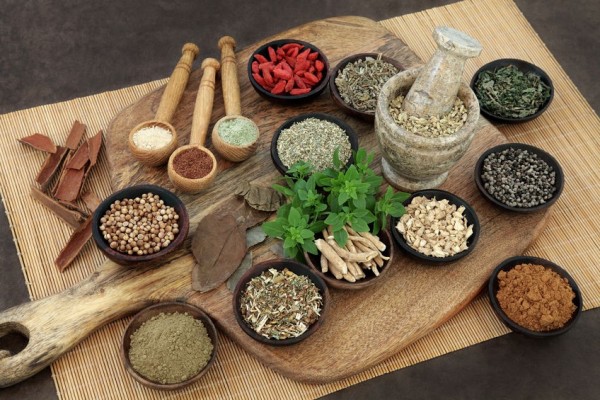 Ayurveda Education Requirements Outside of India
Ayurveda Education Requirements Outside of India